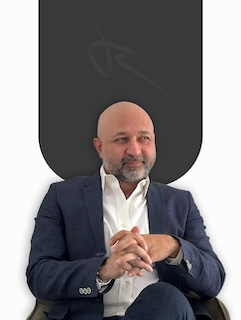Why Walking Away Solves More Problems Than You Think
A personal look at how redirection helps architects break through complex challenges
As an enterprise architect, I’m expected to connect the dots—between business strategy, delivery teams, and technical constraints. But here’s something I’ve learnt the hard way: the harder I try to push through a complex problem, the more stuck I tend to get.
I’ve had days where I sat staring at architecture models, metrics dashboards, or project constraints, convinced that if I just thought harder or kept grinding, the answer would come. It rarely did.
What changed things for me was something deceptively simple: walking away.
Redirection—taking intentional breaks from the problem—has reshaped the way I approach complexity. Whether it’s stepping away for a walk, switching context, or even talking to an imaginary rubber duck (yes, really), I’ve found more breakthroughs in silence and distance than in hours of overthinking.
This article is about how that shift happened for me, and why I believe it’s one of the most underrated tools in the architectural toolkit.
What Is Redirection in Problem Solving?
It’s Not Avoidance—It’s Activation
When I first started using redirection, I worried it was just procrastination with a fancier name. But over time, I realised it’s something far more valuable—it’s how we activate the rest of the brain.
Most of our problem-solving happens in the prefrontal cortex. That’s where logic lives. But when that part of the brain is overloaded—when you’ve been trying to “logic your way” out of a problem for hours—you actually start limiting your ability to find a fresh path.
Redirection pulls you out of that loop. It kicks in other areas of the brain that are better at seeing patterns, making connections, and spotting the simple answer that’s been sitting there the whole time. It’s not about doing nothing. It’s about giving your mind permission to try a new path.
Redirection Isn’t New
This idea isn’t new, and it’s not just for people like us who live in whiteboards, roadmaps, and architecture reviews.
Charles Darwin cracked part of The Origin of Species while sitting in a carriage.
Leo Szilard came up with the concept of nuclear chain reactions while waiting for a traffic light.
Harold Black figured out the negative feedback amplifier during a ferry ride.
None of them were sitting in front of a whiteboard. None of them were “working harder” in that moment.
These breakthroughs happened in motion, in moments of distance—because sometimes, walking away is exactly how we get closer to the answer.
Everyday Redirection Techniques That Actually Work
Walk, Talk, or Shower It Out
When I hit a wall—whether I’m wrestling with a complex system design or trying to untangle misalignment between business and tech—I’ve learnt the best thing I can do is step away.
Personally, my go-to is a shower. There’s something about that space—no screens, no noise—that lets the mental knots loosen. I’ve had some of my clearest architectural insights standing under hot water, halfway through shampooing.
Walking works the same way. A short lap around the block, even just grabbing a coffee, breaks the cycle of staring at the screen hoping clarity will arrive. It rarely does. But the moment I stop forcing it—give my brain space to breathe—ideas start to connect on their own.
Defocusing isn’t a luxury. It’s part of the creative process.
Talk to a Duck (Yes, Really)
It sounds odd, but this one works better than most people expect. There’s a technique in programming called “rubber duck debugging.” You literally talk to a rubber duck (or anything inanimate nearby) and explain your problem in detail.
I’ve done this with sticky notes, empty coffee cups—once, even my own reflection.
The magic is in the explanation. When you try to teach or explain something out loud, your thinking has to slow down. Assumptions get exposed. Gaps show up. And suddenly, you’re seeing the problem differently.
You don’t need a real duck. But you do need to speak the problem—not just think it.
This kind of redirection isn’t about giving up. It’s about shifting gears long enough for your brain to catch up with itself. And trust me, it does.
Why Enterprise Architects Should Care
Problem Solving Is the Job
Our role isn’t just to draw models or run framework workshops. It’s to help teams and leaders get unstuck.
Sometimes that means aligning systems or designing integrations—but often, it’s simply about unlocking the thinking that’s frozen. We’re called when people hit a wall: when business and tech stop speaking the same language, when delivery slows, or when a strategy sounds good but doesn’t land in practice.
That’s where redirection helps. Stepping away, mentally or physically, creates the space for better insights. It shifts your perspective, so you’re not just pushing harder—you’re solving smarter.
For me, redirection has made me a sharper listener, a more thoughtful designer, and a more grounded strategist. It’s not just about clarity for myself—it’s about showing up better for the people I work with.
Make It Part of Your Team Culture
One thing I always try to do when working with delivery teams or architecture guilds is normalise redirection.
We work in environments obsessed with speed. Fast feedback, quick wins, tight iterations. But speed without pause leads to rework and burnout.
Encouraging redirection doesn’t mean slowing down. It means stepping back just long enough to take the right next step. Whether that’s letting someone walk away from a design for a few hours, talking through a challenge with a peer, or swapping tasks to reset focus—it works.
As architects, we can model that behaviour. Show that the best ideas don’t always come from grinding—they come from clarity. And clarity often needs space.
Conclusion
Redirection isn’t some quirky productivity hack—it’s a mindset. One that values mental clarity over constant motion.
I’ve learned (often the hard way) that when I step away from a stuck problem—just for a bit—something always shifts. The solution might not land instantly, but space makes room for it to surface.
Enterprise architecture is creative work. Sure, it’s technical and logical, but underneath it all, we’re solving human and business puzzles. That work needs space to breathe.
So next time you find yourself forcing progress, maybe the best move is to step away. Trust that when you return, your brain will meet you halfway—with a better answer.
Let’s Connect
If you’re leading architecture efforts and your team is stuck or stretched, I help organisations create practical, human-first EA strategies that don’t just tick boxes—they move things forward.
Send me a message. Let’s build smarter.




Sir I have messaged you on Instagram but you are not responding , can you send me your email please or how can I connect with you